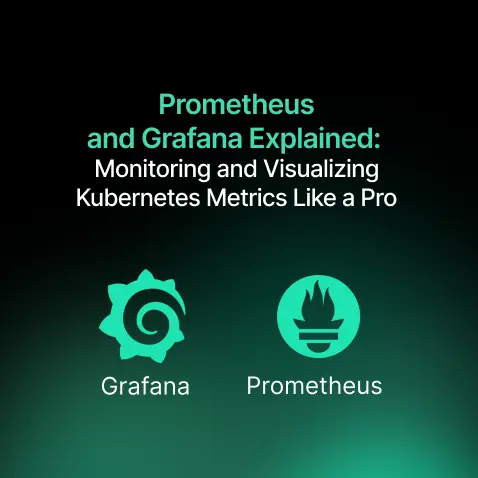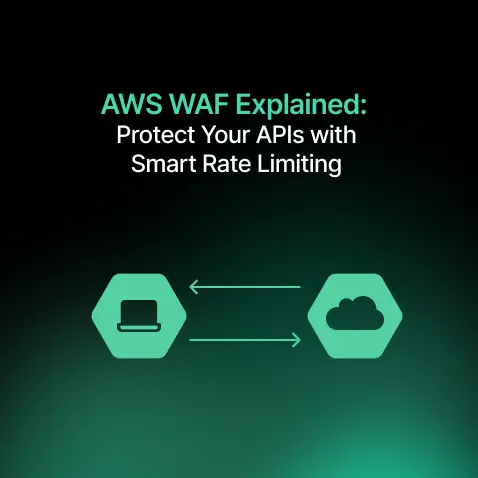AI Cloud vs Traditional Cloud: What US Businesses Need to Know
- Nitin Yadav
- Knowledge
About

AI Cloud vs Traditional Cloud which is right for your business in 2025? Explore how US companies are leveraging AI-powered cloud solutions for predictive analytics, automation, compliance, and competitive growth.
Industries
- AI Cloud, AI cloud benefits, AI Cloud for US companies, AI Cloud services, AI cloud trends, AI Cloud vs Traditional Cloud, AI in cloud computing, AWS AI Cloud, Azure AI Cloud, cloud automation, cloud computing 2025, cloud innovation 2025, Cloud Security, FinOps, FinTech cloud, Google Cloud AI, healthcare AI Cloud, hybrid cloud strategy, predictive cloud analytics, SaaS cloud, SquareOps AI Cloud services, Traditional Cloud
Share Via
Cloud computing has become the backbone of digital transformation in the US. From startups to Fortune 500 enterprises, businesses rely on the cloud to host applications, manage storage, and scale operations. But as AI adoption accelerates, the traditional cloud model is being reshaped.
Today, a new era is emerging: the AI Cloud. Unlike traditional cloud platforms that primarily provide infrastructure, the AI Cloud integrates artificial intelligence (AI) and machine learning (ML) capabilities directly into cloud services. This transforms the cloud from a hosting environment into an intelligent, self-optimizing system that supports predictive analytics, real-time decision-making, and automation.
For US companies navigating SaaS growth, FinTech security, healthcare compliance, or retail personalization, the choice between AI Cloud and Traditional Cloud is critical in 2025. This guide explores definitions, differences, benefits, limitations, costs, industry applications, and future trends to help decision-makers make the right choice.
What is Traditional Cloud Computing?
Traditional cloud computing refers to the on-demand delivery of IT infrastructure, compute power, storage, and networking via the internet. Leading providers like AWS, Microsoft Azure, and Google Cloud dominate this market.
Core features of traditional cloud:
- Scalability: Businesses can scale up or down based on demand.
- Elasticity: Pay only for what you use.
- Virtualization: Resources delivered through VMs and containers.
- Standardization: Compute, storage, and networking are delivered as utilities.
Common use cases:
- Hosting SaaS applications.
- Storing large datasets.
- Running enterprise workloads (ERP, CRM).
- Building web services and APIs.
Limitations of traditional cloud:
- Lacks intelligence. Scaling is reactive, not predictive.
- Manual monitoring. Human intervention is required for optimization.
- Limited automation. Most tasks require configuration and scripting.
In short, the traditional cloud provides infrastructure but not intelligence.
What is AI Cloud?
The AI Cloud combines the infrastructure of traditional cloud computing with native AI and ML capabilities. Instead of simply hosting workloads, AI Cloud platforms can analyze, optimize, and automate them.
Core components of AI Cloud:
- AI-optimized infrastructure: GPUs, TPUs, and specialized hardware for ML.
- Pre-built AI services: Vision, speech, NLP, recommendation systems.
- MLOps & automation: Built-in tools for training, deploying, and monitoring ML models.
- AI-driven operations: Predictive scaling, anomaly detection, and cost optimization.
Leading providers:
- AWS AI Cloud (SageMaker, Rekognition, Comprehend).
- Google Cloud AI (Vertex AI, TensorFlow integration).
- Microsoft Azure AI (Azure ML, Cognitive Services).
- IBM Watson AI Cloud.
- Oracle AI Cloud.
Think of the AI Cloud as the next generation of cloud, not just storing and processing data, but understanding and acting on it.
Key Differences Between AI Cloud and Traditional Cloud
1. Compute & Storage
- Traditional Cloud: Elastic compute and storage, provisioned manually.
- AI Cloud: AI-optimized infrastructure (GPUs/TPUs) + predictive auto-scaling.
2. Automation
- Traditional Cloud: Scaling rules must be set manually.
- AI Cloud: Uses ML to auto-scale workloads before demand spikes.
3. Data Analytics
- Traditional Cloud: Stores and queries raw data.
- AI Cloud: Built-in ML tools for predictive analytics and real-time insights.
4. Security
- Traditional Cloud: Firewalls, IAM policies, and manual monitoring.
- AI Cloud: AI-driven anomaly detection, automated incident response.
5. Cost Optimization
- Traditional Cloud: Manual monitoring of usage and bills.
- AI Cloud: AI-driven FinOps predicts and optimizes cloud costs.
6. Compliance
- Traditional Cloud: Audit tools are available but require manual checks.
- AI Cloud: AI-automated compliance monitoring (HIPAA, SOC2, GDPR).
7. Innovation
- Traditional Cloud: Infrastructure-centric.
- AI Cloud: Enables personalization, chatbots, generative AI, and ML-driven automation.
Comparison Table:
Feature | Traditional Cloud | AI Cloud (2025) |
Compute | Elastic but manual | AI-optimized, predictive |
Automation | Rule-based | ML-driven, proactive |
Analytics | Historical | Real-time + predictive |
Security | Firewalls, IAM | AI anomaly detection |
Cost Optimization | Manual reports | AI-driven FinOps |
Compliance | Manual audits | Automated compliance |
Innovation | Infrastructure focus | AI-native services |
Benefits of AI Cloud for US Businesses

- Real-Time Insights
- AI Cloud provides predictive analytics, not just historical reporting.
- AI Cloud provides predictive analytics, not just historical reporting.
- Enhanced Security
- AI anomaly detection spots unusual activity instantly.
- Fraud detection and intrusion prevention built-in.
- Scalability & Performance
- Predictive auto-scaling ensures no downtime during traffic surges.
- Predictive auto-scaling ensures no downtime during traffic surges.
- Compliance Automation
- AI tracks and logs compliance continuously (SOC2, HIPAA, PCI DSS).
- AI tracks and logs compliance continuously (SOC2, HIPAA, PCI DSS).
- Faster Innovation
- Pre-trained ML APIs speed up the deployment of chatbots, recommendations, and vision-based apps.
- Pre-trained ML APIs speed up the deployment of chatbots, recommendations, and vision-based apps.
- Competitive Advantage
- US companies leveraging AI Cloud deliver better customer experiences, cut costs, and move faster.
Limitations & Challenges of AI Cloud
- Higher Costs: AI workloads (training ML models, GPU usage) can be expensive.
- Talent Gap: Requires AI/ML expertise for advanced use.
- Vendor Lock-In: Proprietary APIs may limit multi-cloud flexibility.
- Data Privacy Concerns: Sensitive industries (healthcare, finance) must ensure data sovereignty.
- Adoption Curve: Cultural and technical readiness required in US enterprises
AI Cloud vs Traditional Cloud: Cost Considerations
- Traditional Cloud Costs:
- Compute, storage, networking.
- Lower entry costs for simple workloads.
- AI Cloud Costs:
- Compute + storage + ML APIs + specialized hardware (GPUs/TPUs).
- Higher upfront cost, but ROI through automation and predictive insights.
Example:
- A SaaS startup → Traditional Cloud may be cheaper initially.
- A FinTech with fraud detection needs → AI Cloud provides higher ROI by reducing losses.
For US enterprises, the ROI of AI Cloud often outweighs costs when workloads require intelligence.
Industry-Specific Applications of AI Cloud in the US
- SaaS
- Personalization engines (like Netflix-style recommendations).
- Predictive scaling during peak usage.
- FinTech
- Real-time fraud detection.
- Credit risk analysis with ML models.
- Healthcare
- HIPAA-compliant diagnostics.
- Patient monitoring with AI-driven alerts.
- Retail & E-Commerce
- AI demand forecasting for inventory.
- Personalized product recommendations.
- Manufacturing/IoT
- Predictive maintenance on machines.
- Edge AI for smart factories.
Case Study Example: A US retailer reduced stockouts by 40% using AI Cloud forecasting.
Choosing Between AI Cloud and Traditional Cloud
Checklist for US CTOs/CIOs:
- Workload Complexity: Are insights needed in real time?
- Regulatory Needs: Is HIPAA/SOC2 compliance critical?
- Budget: Do you prioritize low entry cost or long-term ROI?
- Innovation Goals: Is personalization or AI automation part of the strategy?
- Hybrid Approach: Combine traditional cloud for baseline workloads with AI Cloud for advanced analytics.
Recommendation: Most US companies should adopt a hybrid model traditional cloud for general workloads, AI Cloud for innovation-driven projects.
Future of AI Cloud vs Traditional Cloud
- Generative AI Integration: Cloud providers embedding LLMs (large language models).
- Edge AI: Processing data closer to IoT devices.
- Autonomous Cloud: Self-healing, self-optimizing infrastructure.
- AI-First Enterprises: US companies that adopt AI Cloud will outperform traditional cloud-only competitors by 2030.
Traditional cloud will remain for core workloads, but AI Cloud will dominate innovation workloads.
Conclusion
In 2025, US businesses cannot ignore the shift from traditional cloud to AI Cloud. While traditional cloud remains the foundation for compute and storage, the AI Cloud transforms infrastructure into an intelligent, predictive system.
- Traditional Cloud: Reliable, scalable, cost-efficient for standard workloads.
- AI Cloud: Smart, predictive, and innovation-ready for data-intensive industries.
For SaaS startups, FinTech firms, healthcare providers, and retail enterprises, the move to AI Cloud offers a competitive advantage, compliance automation, and faster innovation.
At SquareOps, we specialize in helping US companies transition from traditional to AI Cloud, ensuring compliance, scalability, and AI-powered success.
Frequently asked questions
AI Cloud integrates machine learning and AI capabilities, while Traditional Cloud focuses on infrastructure like compute and storage.
It enables predictive analytics, compliance automation, enhanced security, and faster innovation.
Yes, but AI Cloud often provides higher ROI through automation and real-time insights.
SaaS, FinTech, healthcare, retail, and manufacturing gain the most from AI-driven scalability and analytics.
Traditional Cloud will remain for basic workloads, but AI Cloud will dominate innovation and intelligence-driven workloads.
Yes. Many AI Cloud providers offer scalable, pay-as-you-go pricing. US startups and SMBs can begin with AI-powered APIs for automation, analytics, and customer personalization without major infrastructure costs.
AI Cloud platforms use intelligent threat detection, behavior analytics, and automated incident response to detect anomalies in real time — providing stronger security than manual monitoring in traditional cloud setups.
Absolutely. A hybrid model is ideal running core workloads on traditional cloud and innovation-driven workloads on AI Cloud. This balances cost-efficiency with AI-powered scalability and automation.
Common challenges include higher initial costs, the need for AI/ML expertise, data privacy compliance, and potential vendor lock-in. Partnering with managed service providers like SquareOps simplifies adoption.
By 2030, AI Cloud will power most intelligent enterprise workloads from predictive analytics to automated compliance. US companies adopting AI Cloud early will gain agility, cost savings, and competitive advantage.
Related Posts

Comprehensive Guide to HTTP Errors in DevOps: Causes, Scenarios, and Troubleshooting Steps
- Blog

Trivy: The Ultimate Open-Source Tool for Container Vulnerability Scanning and SBOM Generation
- Blog

Prometheus and Grafana Explained: Monitoring and Visualizing Kubernetes Metrics Like a Pro
- Blog

CI/CD Pipeline Failures Explained: Key Debugging Techniques to Resolve Build and Deployment Issues
- Blog

DevSecOps in Action: A Complete Guide to Secure CI/CD Workflows
- Blog

AWS WAF Explained: Protect Your APIs with Smart Rate Limiting
- Blog

